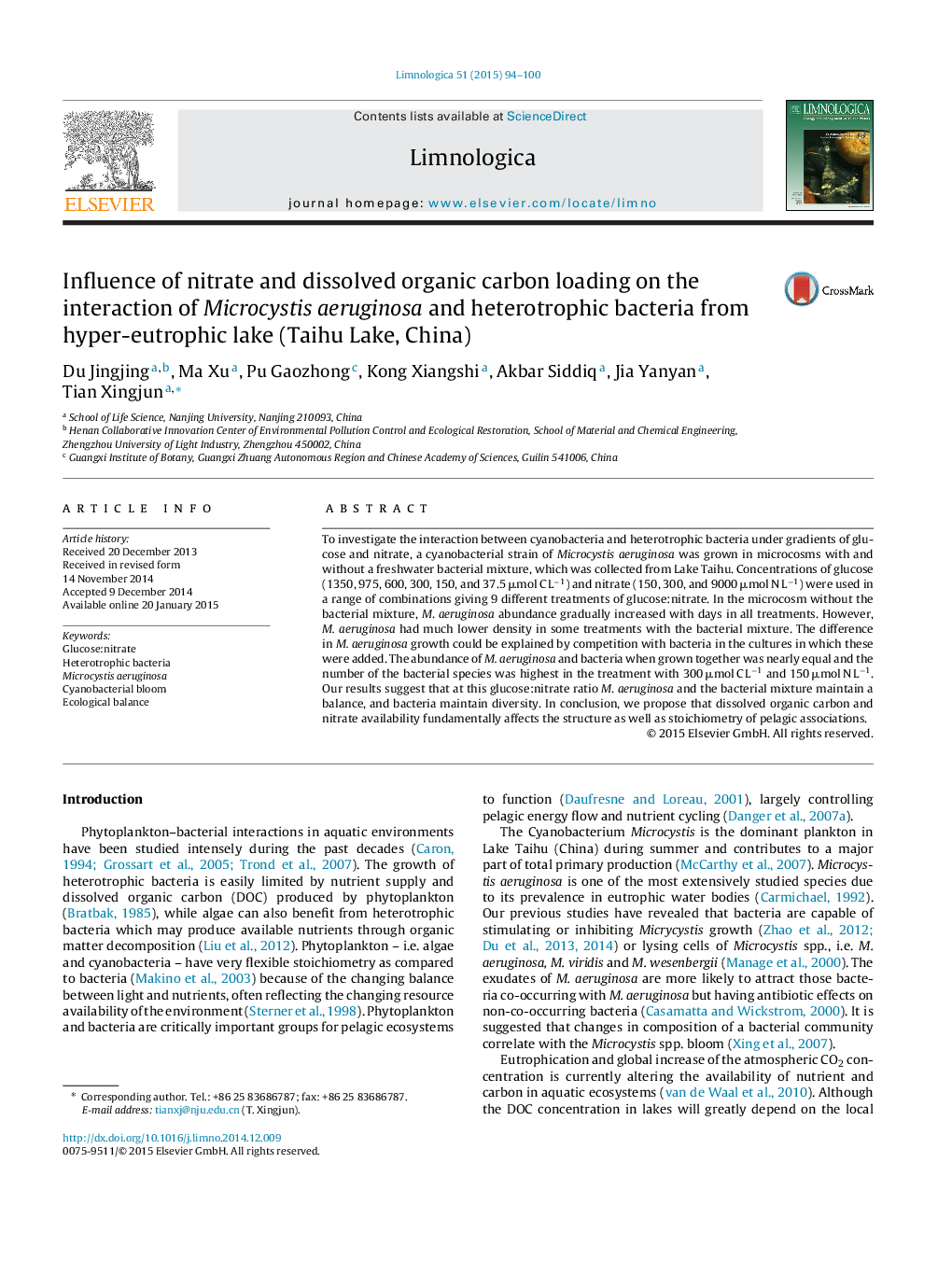| Article ID | Journal | Published Year | Pages | File Type |
|---|---|---|---|---|
| 6305597 | Limnologica - Ecology and Management of Inland Waters | 2015 | 7 Pages |
To investigate the interaction between cyanobacteria and heterotrophic bacteria under gradients of glucose and nitrate, a cyanobacterial strain of Microcystis aeruginosa was grown in microcosms with and without a freshwater bacterial mixture, which was collected from Lake Taihu. Concentrations of glucose (1350, 975, 600, 300, 150, and 37.5 μmol C Lâ1) and nitrate (150, 300, and 9000 μmol N Lâ1) were used in a range of combinations giving 9 different treatments of glucose:nitrate. In the microcosm without the bacterial mixture, M. aeruginosa abundance gradually increased with days in all treatments. However, M. aeruginosa had much lower density in some treatments with the bacterial mixture. The difference in M. aeruginosa growth could be explained by competition with bacteria in the cultures in which these were added. The abundance of M. aeruginosa and bacteria when grown together was nearly equal and the number of the bacterial species was highest in the treatment with 300 μmol C Lâ1 and 150 μmol N Lâ1. Our results suggest that at this glucose:nitrate ratio M. aeruginosa and the bacterial mixture maintain a balance, and bacteria maintain diversity. In conclusion, we propose that dissolved organic carbon and nitrate availability fundamentally affects the structure as well as stoichiometry of pelagic associations.
